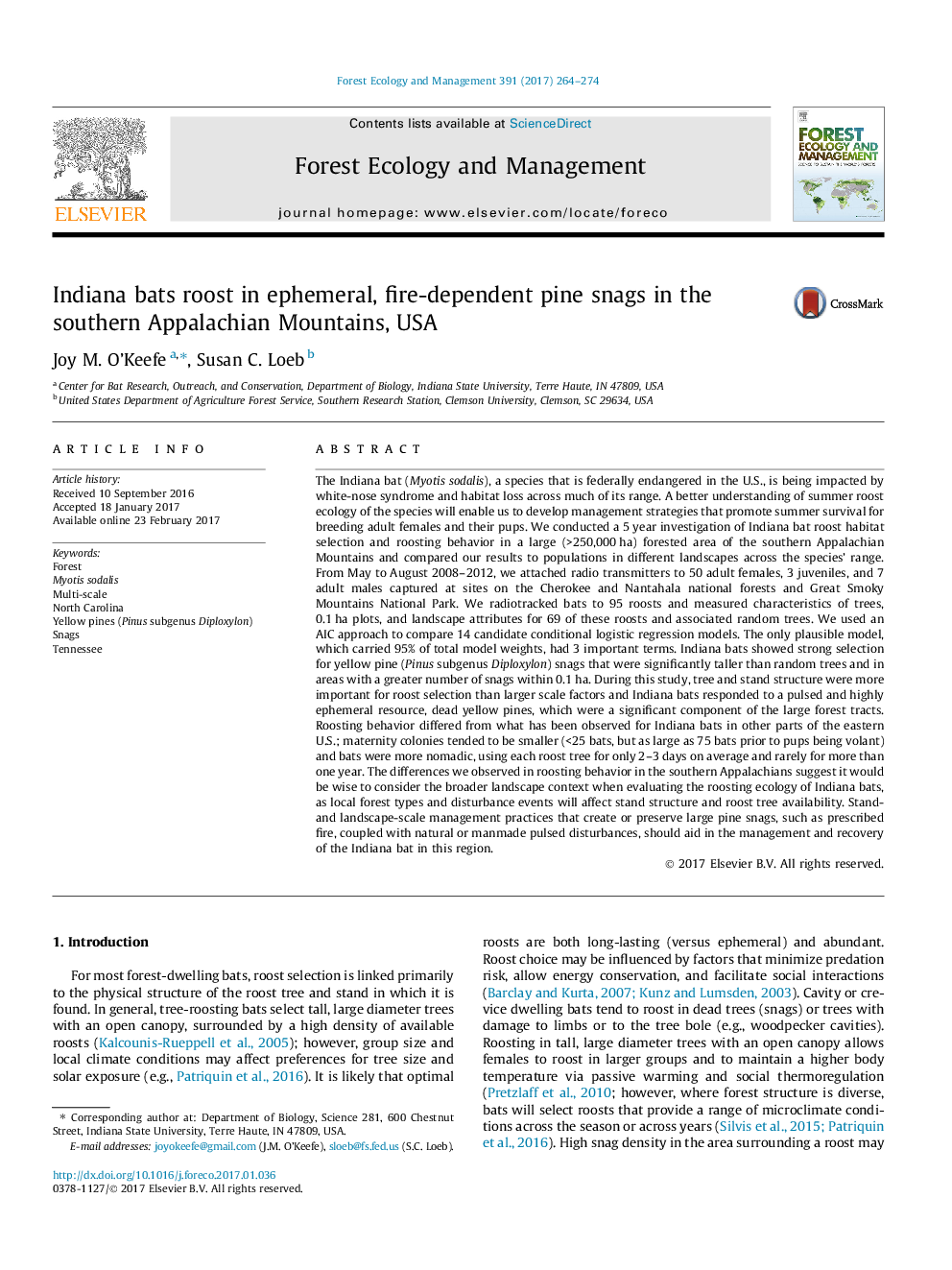| کد مقاله | کد نشریه | سال انتشار | مقاله انگلیسی | نسخه تمام متن |
|---|---|---|---|---|
| 6459447 | 1421367 | 2017 | 11 صفحه PDF | دانلود رایگان |
• We tracked Indiana bats to 95 day roosts in the southern Appalachian Mountains.
• Indiana bat colonies were smaller and bats displayed less fidelity to roosts than in the Midwest.
• Roosts were mainly tall, solar-exposed pine snags, particularly yellow pine snags.
• Creating or preserving large pine snags may aid Indiana bat recovery in this region.
• Consider landscape context when developing conservation strategies for Indiana bats.
The Indiana bat (Myotis sodalis), a species that is federally endangered in the U.S., is being impacted by white-nose syndrome and habitat loss across much of its range. A better understanding of summer roost ecology of the species will enable us to develop management strategies that promote summer survival for breeding adult females and their pups. We conducted a 5 year investigation of Indiana bat roost habitat selection and roosting behavior in a large (>250,000 ha) forested area of the southern Appalachian Mountains and compared our results to populations in different landscapes across the species’ range. From May to August 2008–2012, we attached radio transmitters to 50 adult females, 3 juveniles, and 7 adult males captured at sites on the Cherokee and Nantahala national forests and Great Smoky Mountains National Park. We radiotracked bats to 95 roosts and measured characteristics of trees, 0.1 ha plots, and landscape attributes for 69 of these roosts and associated random trees. We used an AIC approach to compare 14 candidate conditional logistic regression models. The only plausible model, which carried 95% of total model weights, had 3 important terms. Indiana bats showed strong selection for yellow pine (Pinus subgenus Diploxylon) snags that were significantly taller than random trees and in areas with a greater number of snags within 0.1 ha. During this study, tree and stand structure were more important for roost selection than larger scale factors and Indiana bats responded to a pulsed and highly ephemeral resource, dead yellow pines, which were a significant component of the large forest tracts. Roosting behavior differed from what has been observed for Indiana bats in other parts of the eastern U.S.; maternity colonies tended to be smaller (<25 bats, but as large as 75 bats prior to pups being volant) and bats were more nomadic, using each roost tree for only 2–3 days on average and rarely for more than one year. The differences we observed in roosting behavior in the southern Appalachians suggest it would be wise to consider the broader landscape context when evaluating the roosting ecology of Indiana bats, as local forest types and disturbance events will affect stand structure and roost tree availability. Stand- and landscape-scale management practices that create or preserve large pine snags, such as prescribed fire, coupled with natural or manmade pulsed disturbances, should aid in the management and recovery of the Indiana bat in this region.
Journal: Forest Ecology and Management - Volume 391, 1 May 2017, Pages 264–274
